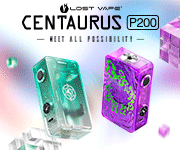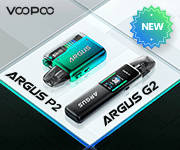WaitFor1t88
Veteran
- Joined
- Nov 23, 2015
- Messages
- 9,584
(FROM MOOCH'S FB, ALL CREDIT etc)
I have seen a couple of mentions of overheating and failure with Efest SODA chargers so I decided to check into it.
I measured the external and internal temperatures of two SODA chargers at their 0.5A and 1A settings, charging two batteries at once. They were only about 3°C apart for any temperature reading so I averaged the two readings.
Ambient temperature = 27°C
Temperatures at 1A:
Top external = 71°C
Bottom external = 87°C
Internal = 108°C
Batteries = 53°C
Those charger and battery temperatures are too high!
The bottom was hot enough to be painful to touch and the internal temperature exceeded the 105°C rated max of the capacitors inside (see the photos). Those capacitors are quite temperature sensitive and shouldn't be run at anywhere near their max rating to ensure a long life. That high of a temperature is also bad for every other component in the charger.
Images: https://imgur.com/a/DG90C
In addition, the batteries were being heated up above the 45°C (approximately) point where aging of the batteries starts accelerating. The measured temperature of 53°C is what I would call "very warm".
In my opinion, this charger runs too hot at the 1A setting and could fail prematurely because of that. It will also heat your batteries up enough to possibly shorten their overall life some. I advise running the Efest SODA charger only at its 0.5A setting.
Charger temperatures at 0.5A:
Top external = 49°C
Bottom external = 55°C
Internal = 71°C
Batteries = 38°C
Running it at the 0.5A setting does not guarantee that everything will be OK!
I still recommend always charging on a non-flammable surface and staying nearby until charging is done. Then remove the batteries from the charger and store them in a non-conductive case or sleeve. Do not store your batteries in the charger!
Never put any charger in a LiPo battery charging bag!
Those bags are made to only hold the battery pack. Putting the charger and batteries in the bag traps all the heat from the charger inside and the temperatures can rise high enough to cause failure of the charger and/or accelerated aging of your batteries.
I haven't tested any other chargers.
I don't know when I'll be testing any other chargers or what tests will be done. I don't know the temperatures of any other chargers. This was a pop-up safety-related issue and those will always take priority.





I have seen a couple of mentions of overheating and failure with Efest SODA chargers so I decided to check into it.
I measured the external and internal temperatures of two SODA chargers at their 0.5A and 1A settings, charging two batteries at once. They were only about 3°C apart for any temperature reading so I averaged the two readings.
Ambient temperature = 27°C
Temperatures at 1A:
Top external = 71°C
Bottom external = 87°C
Internal = 108°C
Batteries = 53°C
Those charger and battery temperatures are too high!
The bottom was hot enough to be painful to touch and the internal temperature exceeded the 105°C rated max of the capacitors inside (see the photos). Those capacitors are quite temperature sensitive and shouldn't be run at anywhere near their max rating to ensure a long life. That high of a temperature is also bad for every other component in the charger.
Images: https://imgur.com/a/DG90C
In addition, the batteries were being heated up above the 45°C (approximately) point where aging of the batteries starts accelerating. The measured temperature of 53°C is what I would call "very warm".
In my opinion, this charger runs too hot at the 1A setting and could fail prematurely because of that. It will also heat your batteries up enough to possibly shorten their overall life some. I advise running the Efest SODA charger only at its 0.5A setting.
Charger temperatures at 0.5A:
Top external = 49°C
Bottom external = 55°C
Internal = 71°C
Batteries = 38°C
Running it at the 0.5A setting does not guarantee that everything will be OK!
I still recommend always charging on a non-flammable surface and staying nearby until charging is done. Then remove the batteries from the charger and store them in a non-conductive case or sleeve. Do not store your batteries in the charger!
Never put any charger in a LiPo battery charging bag!
Those bags are made to only hold the battery pack. Putting the charger and batteries in the bag traps all the heat from the charger inside and the temperatures can rise high enough to cause failure of the charger and/or accelerated aging of your batteries.
I haven't tested any other chargers.
I don't know when I'll be testing any other chargers or what tests will be done. I don't know the temperatures of any other chargers. This was a pop-up safety-related issue and those will always take priority.
















